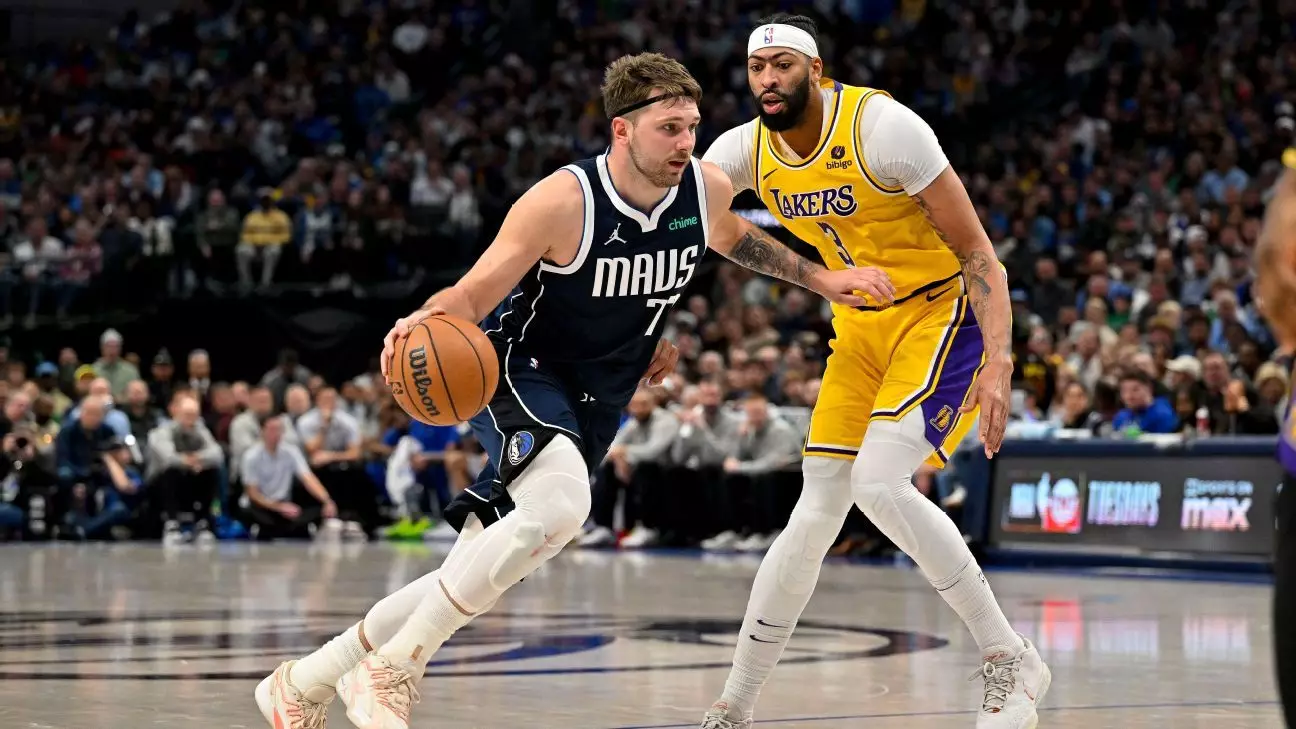The tides of the NBA have shifted dramatically with a monumental trade involving three franchises: the Los Angeles Lakers, Dallas Mavericks, and Utah Jazz. This deal, which centers on Anthony Davis and Luka Doncic, promises to reshape the competitive dynamics of the Western Conference for the foreseeable future. With implications that extend beyond the current season, the trade showcases a blend of strategy, ambition, and response to ongoing player performance and health issues.
In a groundbreaking three-team transaction, the Lakers will obtain young superstar Luka Doncic, along with his compatriots Maxi Kleber and Markieff Morris from the Mavericks. In return, the Mavericks secure powerhouse Anthony Davis, rookie Max Christie, and the Lakers’ coveted 2029 first-round pick, while the Jazz bolster their roster with Jalen Hood-Schifino and two second-round picks from both the Lakers and Mavericks. This complex negotiation underscores each team’s differing philosophies and objectives.
Dallas’s decision to pivot away from Doncic highlights underlying tensions regarding his fitness and commitment. According to sources, the organization had experienced mounting frustration over Doncic’s struggles with conditioning, particularly given his substantial weight fluctuations early in the season. The desire for an elite defensive player in Davis underscores the Mavericks’ intent to construct a more resilient team capable of immediate success, especially as Luka battled injuries and conditioning issues.
The Mavericks’ General Manager, Nico Harrison, articulated a clear vision in pursuit of a championship window, emphasizing a firm belief in the adage that “defense wins championships.” By acquiring Davis, a recognized All-Defensive center, Dallas is not only enhancing their current roster but is also sending a message that they are ready to compete at the highest levels. The trade represents a calculated risk as they surrender one of the league’s premier talents.
Conversely, the Lakers have set their sights on Doncic as a cornerstone of their future. Amid ongoing discussions about LeBron James’s impending retirement and the need for a new star, Doncic presents an ideal fit. As a young player with demonstrated talent and a high ceiling, he promises to invigorate a franchise that has historically relied on high-caliber talent—matching the ambitions of both the organization and its fan base.
Upon learning of the trade while dining with family after a game, LeBron James was reportedly taken aback. This reaction speaks volumes about the unpredictability of trade negotiations and the pressure on players to continually adapt. Internal discussions must have been vigorous, as LeBron’s views on the franchise’s strategic direction are often vocalized. Notably, both Davis and Doncic were left unaware until the news broke, indicating a significant level of secrecy and urgency among the executives involved.
As the season progresses, the impacts of player health will be pivotal. Even prior to the trade, both Davis and Doncic were grappling with considerable injuries. While Davis’s abdominal strain has sidelined him, Doncic has struggled with calf issues that have kept him off the court for much of the season. How both players manage their health moving forward will undoubtedly influence their respective teams’ playoff aspirations.
This landmark trade is the first time that two active All-NBA players have been exchanged midseason, elevating its historical significance in the NBA. The complexities of orchestrating such deals often deter franchises, but this execution signals a shift towards boldness in roster management.
With both the Mavericks and Lakers set to face each other two more times this season, fans and analysts will be eagerly watching for early glimpses of these new lineups. Will the Mavericks emerge as a defensive powerhouse with Davis leading the frontline? Can Doncic fulfill the expectations set upon him in Los Angeles and redefine the Lakers’ trajectory post-LeBron? The answers to these questions may shape the playoff landscape and influence how teams approach team-building in the years to come.
The ramifications of this trade will be felt far beyond the present season as teams recalibrate their strategies based on the evolving narrative of player health, roster management, and championship aspirations. The basketball world is poised to witness an exciting new chapter that will influence the competitive balance across the league.

